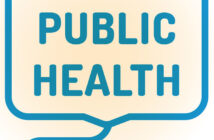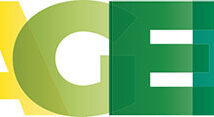BY TIFFANY FERGUSON, LMSW, CMAC, ACM, AND JENNY QUIGLEY-STICKNEY, MSN, RN, MHA, MA, CCM, ACM-RN, CMAC, CPHM
The COVID-19 Public Health Emergency (PHE), which is nationally coming to a close in May 2023, transformed our healthcare system across the continuum of care changing rules and regulations to speed the throughput and facilitate safe transitions of care by imploding the current healthcare structure. This change created stress on the healthcare workforce leading to the “Great Retirement,” the “mass exodus” of healthcare workers, the popularization of travel nursing, widespread nursing strikes and walk-outs and the ever–changing remote workforce. Our healthcare system was already stressed prior to the pandemic; however, now it is beyond limits with the exacerbation of patients’ holding in the ED waiting for a hospital bed or delayed starts for services for everything from primary care visits to home health services. There is just not enough workforce for the demand of patients requiring care. In addition to fewer people in the workforce, those who have stayed are being paid at an exponentially higher rate; along with supply costs, the healthcare delivery bottom line is shrinking. These constraints on the system are forcing new players and processes into the marketplace. For the case management workforce, triumph will occur through improvements in technology, new staffing models and successful delegation either internally or to external organizations.
Case management programs will need to examine the following questions:
- Does a human need to do this task, or how can the task be computer automated?
- What is the lowest level of license or degree for the workforce this item requires?
- Do these tasks need to occur internally, or is there a better cost structure to utilize an external workforce?
Delegation is defined in case management as the reassignment of case management tasks to supportive ancillary staff within the framework of programmatic objectives and functions. The five rights of delegation are the right task, the right circumstance, the right person, the right direction/communication within the right supervision and the evaluation of the task (mass.gov). The rules for effective delegation start with a rule of understanding that you do not have to do all the tasks yourself to have a sense of ownership of the patient’s care plan. Second, to be proactive and third, to be aware of your case management team’s strengths and weaknesses. In the leadership role, function as a teacher, establish clear expectations, keep communication open with active engagement of the team in the change process, transition to delegation, give and receive open feedback from the case management team (Beckers Hospital Review, May 27, 2016).
Considering Computer Automation
A major way to optimize the case management labor force is through the delegation of tasks to technology. “Innovation isn’t always about adding technology but rather exploring other possibilities with the technology already available” (Haseman, R., February 2023).
There are many tasks in the case management day that exhaust time and resources with repeatable functions, often already involving technology. Although the computer was designed to provide improvements to our society, sometimes it can feel like one is working for the computer to manually pull and move information around rather than the computer working for the employee. How is healthcare the only area that relies so heavily on the fax machine? Any task that is completed multiple times a day by electronic means should be considered for automation. For instance, rather than going into a patient list, opening patient charts one by one, there are many programs that will machine read the charts to tell the case manager which patients likely need case management services. Work queues and worklists can be optimized for utilization review and shared across team members to cover multiple hospitals either onsite or remotely, locally, nationally or internationally.
Documentation can be streamlined with “dot.” phrases to reduce typing burden. Robotic processing is utilized to carry authorization numbers from one system to another, or to automatically send the discharge summary to the payer or post-acute provider. Faxing can be done electronically; communication can be done via secure chat and referrals across the care continuum can be completed through shared platforms to enhance communication between the patient, the case manager and the post-acute provider.
Delegation to Ancillary Staff
Practice guidelines are determined by the scope of practice for each licensed professional within the state in which their work is located and by the license held. Compliance for case managers must also occur under CMS Conditions of Participation for discharge planning (42 CFR § 482.43), stating that “any discharged planning evaluation or discharge plan required under this paragraph must be developed by, or under the supervision of a registered nurse, social worker, or other appropriately qualified personnel.” Although the discharge plan must be assessed and formulated by the qualified personnel, the activities to carry out that plan such as sending post-acute referrals, arranging follow-up appointments or coordinating transportation can be delegated to ancillary staff. Typically, the delegation of these roles fits under popular titles such as case management assistants, post-acute coordinators or liaisons, navigators or extenders to ensure the case management professionals (typically social workers or registered nurses) can proactively meet the needs of their patient population. The use of assistants to case managers can provide much-needed support with task completion to enhance a professional case manager’s scope of practice. Under this model, the supportive staff is housed in the case management department and works at the elbow of the case management team. Departments outline the scope and tasks that are appropriate for this level of personnel and then each case manager decides when to utilize the ancillary staff to support discharge logistics.
In a consultative model, ancillary staff are pulled out or centralized to provide specific functions not only to the case managers but also to the hospital and/or care team to reduce delays. Hospitals may create centralized resource centers that handle all the follow–up appointments, or coordination of durable medical equipment at discharge via a consultation from anyone in the care team. They may have transportation coordinators who specifically support any patient who requires transportation assistance regardless of whether case management is involved in the patient case. In this model, the activities that are determined to “not require a professional license” are delegated in a standardized workflow and process rather than task delegation dependent by case manager preferences.
New Models of Case Management Workflow
As case management departments continue to evolve past the traditional models, many health systems are moving away from the dyad, triad and hybrid models of a nurse and a social worker relegated to a particular unit. Instead, hospitals operate with remote, contracted or centralized utilization review teams, sometimes even using offshore or contracted nursing. By optimizing the discharge logistics of licensed case managers to ancillary staff, capacity can expand for case management staffing structures. Rather than a nurse and a social worker, both licensed professionals, completing all the discharge planning and logistics on the unit, considerations can be made to assess if both are needed or if an assignment can be covered by a case manager, either a social worker, nurse or other appropriately skilled licensed professional. Patients with additional or specialized needs such as complex social determinants are consulted to the complex case manager, and skilled to address the barriers impacting the unnecessarily prolonged hospitalization. Patients requiring clinical social work skills such as adoptions, trauma or new medical diagnoses of end-stage renal disease or cancer are receiving a mental health or clinical social work consultation rather than an assumed assignment. These adjustments to the patient population allow agility of the workforce and create more specialization based on the services and licenses held of the professional rather than placing the licensed professional on an assignment with an undefined workload.
Utilizing technology with new staffing models
Creating models for managing the future trends for staff shortages, delegation and the ever-changing landscape of healthcare, as we move out of a national public health emergency and evolve into a new normal for U.S. healthcare has been a challenge, but several models seem to be working for case management programs across the continuum of care. Case management programs are learning how to optimize their workforce by revisiting technology and delegating tasks to a workforce that has traditionally been undervalued from the healthcare setting. Utilizing the electronic healthcare record with imbedded electronic discharge planning programs that have the capacity to refer, analyze and monitor tasks required to manage the patient care plan in real time have allowed the case manager to bridge both the care plan, resources utilization and records for technological monitoring of patients’ health. CMSA’s Standard of Care for Health Information technology ensures that utilization of HIT technology is intended to improve communication for patient care, reduce costs, increase efficiency and improve patient outcomes. Professional case managers will take responsibility for learning new technology, participating in ongoing use with predictive analysis and resource optimization. Professional case managers will eventually evolve technology to integrate the care plan quicker and faster, enabling better time efficiency, real time results and ability to use AI to resolve ancillary staffing needs (CMSA SOC, HIT 2022).
As we move into a post-pandemic world, it is time for all healthcare workers to analyze what was created during a time of great stress to successfully examine what has worked and what new solutions need to stay within the future healthcare system. While we perform this analysis, it is important for all levels of the care continuum to examine how they will staff each level as we move forward. Particular focus should be on the wellness of the healthcare workers creating solutions for staffing that support all staff and return the focus of care in case management to the patient and the joy of medicine (Surgeon General, 2022). Shortages of case managers in nursing and social work have created new opportunities for case management education and certification, and new models of case management staffing to manage the needs of case management departments. New designs include CM nursing, social work and occupational health case managers leading the case management model and delegating tasks to case management liaisons, assistants and navigators. New trends for staffing are highlighting the importance of delegation skills, scope of practice guidelines and knowledge of what will stay from the CMS waivers and the end is only to be determined by May 2023. What we know is that as we approach the future technology telehealth, digital monitoring of patient health needs and expansion of the electronic record will be a part of our future and AI integration will evolve to create new solutions for minimizing the healthcare shortage.
References
Becker’s Hospital Review February 21, 2023, Retrieved from, https://www.beckershospitalreview.com/hit-speaker-series-q-a/63-system-execs-share-the-most-valuable-tech-investments-in-the-last-2-years.html
CMS Conditions for Participation from interpretive guidelines, https://www.cms.gov/rRegulations-and-Guidance/Guidance/Transmittals/downloads/R37SOMA.pdf.
Case Management Society of America. CMSA Standards of Practice. Standard HIT. Revised 2022.Copyrighted CMSA 2022.
Haseman, R. 63 system execs share the most valuable tech investments in the last 2 years.
Gelinas, L. DNP, RN, CPPS, FAAN, The Nursing Shortage, this one is different. American Nursing Journal. July 2022, Volume 17 Page 7.
Olenick, E. DNP,RN,NEA-BC, What’s the economic value of nursing, addressing the nursing shortage requires healthcare policy change. American Nurse Journal. November 2022 Volume 17, Number 17, page 56.
Surgeon General Murthy, V. Addressing Health Worker Burnout. The US Surgeon General’s Advisory on Building a Thriving Health Workforce. May 23, 2022.

Tiffany Ferguson, LMSW, CMAC, ACM, is CEO of Phoenix Medical Management, Inc., the case management company. Tiffany serves as an adjunct professor at Northern Arizona University, Department of Social Work and on the American College of Physician Advisors (ACPA) Observation Subcommittee. Tiffany is a regular contributor to RACmonitor, Case Management Monthly, serves on the editorial board for CMSA Today and is commentator for Finally Friday. She is a weekly correspondent on SDoH for the news podcast Monitor Monday. After practicing as a hospital social worker, she went on to serve as director of case management and quickly assumed responsibilities in system level leadership roles in health & care management, which include CM, UR, CDI, HIM and coding. She has held C-level responsibility for a large employed medical group, which included value-based arrangements, PCMH and outpatient care management. Tiffany is a graduate of Northern Arizona University and received her MSW at UCLA. She is a licensed social worker, ACM and CMAC certified.

Jenny Quigley-Stickney, RN, MSN, MHA, MA, CCM, ACM-RN CPHM, CMAC, is a professional case manager with Cape Cod Healthcare. Jenny has been active with CMSA/CMSNE for over 20 years, serving as the president of CMSNE and chair for both CMSA and CMSNE Public Policy Committees. She is currently serving on the Board of Directors for CMSA National. She is active in the New England states promoting the advancement of the Nurse Licensure Compact, and telehealth legislation for healthcare provision. She has a passion for legislative work and believes that legislation helps advance the field of professional case management.
She has been employed at all levels of the transitions of care, working with traumatic brain injury, stroke and spinal cord for over 25 years. During that time, she provided professional case management for inpatient rehab, hospital-based home care and outpatient rehab care. She recently has shifted her work back to her first love, acute care, focusing on vascular and trauma care.
Job searching or hiring? Access the CMSA Career Center, the industry’s premier electronic recruitment resource.




